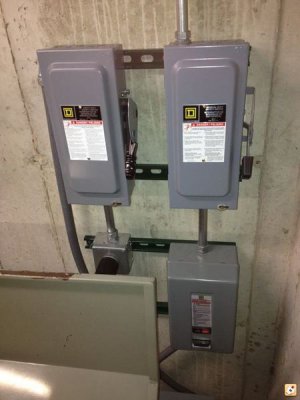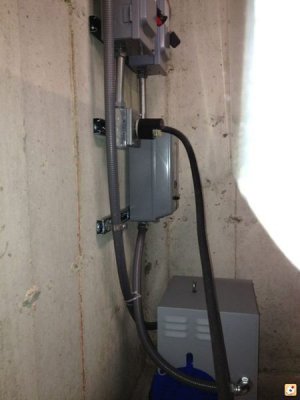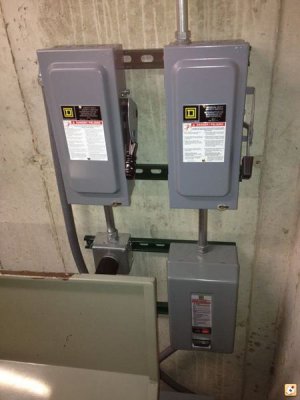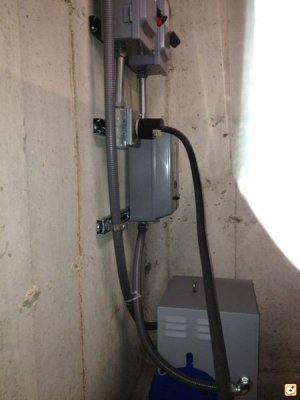- Joined
- Oct 27, 2013
- Messages
- 124
When I moved my lathe into it's permanent location (on a wall under, tucked in under stairs) I opted for two pieces of safety equipment. First was a guarded motor starter, combined with a big, easy to find paddle style emergency style stop. https://www.grizzly.com/products/H8242
The next thing I did was pick up an industrial quality disconnect box with a similarly big, easy to reach lever style throw. The power from the main breaker box routes through the wall, into the disconnect located at the tailstock end of the lathe and then via armored cable to the paddle style switch. then on to the motor.
Since I'm a one man shop hobbyist and only plan on running one machine at a time, is it totaly unacceptable to use a second knock out and a second armored cable from the same disconnect to power up my mill? I plan to set the mill in the middle of the garage floor. My other option would be to bring power down from the ceiling and have a 2nd, dedicated disconnect on either the milling machine itself, or a free standing pedestal built solely for the purpose of being a place to mount the disconnect.
The next thing I did was pick up an industrial quality disconnect box with a similarly big, easy to reach lever style throw. The power from the main breaker box routes through the wall, into the disconnect located at the tailstock end of the lathe and then via armored cable to the paddle style switch. then on to the motor.
Since I'm a one man shop hobbyist and only plan on running one machine at a time, is it totaly unacceptable to use a second knock out and a second armored cable from the same disconnect to power up my mill? I plan to set the mill in the middle of the garage floor. My other option would be to bring power down from the ceiling and have a 2nd, dedicated disconnect on either the milling machine itself, or a free standing pedestal built solely for the purpose of being a place to mount the disconnect.





